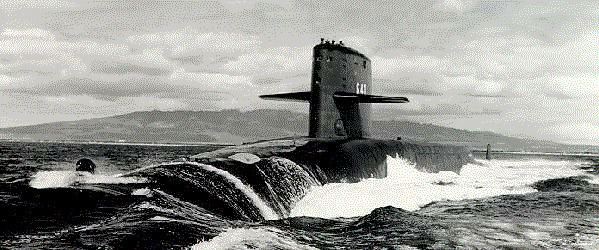Succeeded by Ohio class | Preceded by James Madison class Built 1963–1967 | |
 | ||
Name Benjamin Franklin class Builders General Dynamics Electric BoatNewport News ShipbuildingMare Island Naval Shipyard | ||
The Benjamin Franklin-class submarine was a group of US ballistic missile submarines that were in Navy service from the 1960s–2000s. The class was an evolutionary development from the earlier James Madison class of fleet ballistic missile submarine. Having quieter machinery and other improvements, it is considered a separate class. A subset of this class is the re-engineered 640 class starting with USS George C. Marshall (SSBN-654). The Benjamin Franklin class, together with the George Washington, Ethan Allen, Lafayette, and James Madison classes, composed the "41 for Freedom" that was the Navy's primary contribution to the nuclear deterrent force through the late 1980s. This class and the James Madison class are combined with the Lafayettes in some references.
Contents
Design
The Benjamin Franklin-class submarines were built with the Polaris A-3 ballistic missile, and in the early 1970s were converted to carry the Poseidon C-3 missile. During the late 1970s and early 1980s, six boats were further modified to carry the Trident I (C-4) missile, along with six James Madison-class boats. These were Benjamin Franklin, Simon Bolivar, George Bancroft, Henry L. Stimson, Francis Scott Key, and Mariano G. Vallejo.
Due to the loss of USS Thresher in April 1963, this class was designed to SUBSAFE standards and its equipment was similar to the Sturgeon-class fast attack submarines (SSNs). Previous US SSBNs except the George Washington class had equipment similar to the Thresher-class SSNs.
This class can be distinguished by the fairwater planes' location halfway up the sail; the Lafayettes and James Madisons had the fairwater planes in the upper front portion of the sail.
Two submarines of this class were converted for delivery of up to 66 SEALs or other Special Operations Forces each. In the early 1990s, to make room for the Ohio-class ballistic missile submarines within the limits set by the SALT II strategic arms limitation treaty, the ballistic missile tubes of Kamehameha and James K. Polk were disabled. Those boats were redesignated special operations attack submarines and given attack submarine (SSN) hull classification symbols. They were equipped with dry deck shelters to accommodate SEAL Delivery Vehicles or other equipment.
Fate
The Benjamin Franklins were decommissioned between 1992 and 2002 due to a combination of SALT II treaty limitations as the Ohio class SSBNs entered service, age, and the collapse of the Soviet Union. USS Kamehameha was decommissioned on 2 April 2002, the last ship of the Benjamin Franklin class to be decommissioned.
The sail of George Bancroft is preserved at the Naval Submarine Base King's Bay, Georgia. James K. Polk's sail is on display at the National Museum of Nuclear Science & History in Albuquerque, New Mexico. Mariano G. Vallejo's sail is preserved at Mare Island, California, where she was built.
Boats in class
Submarines of the Benjamin Franklin class: (Submarines marked with * indicate Trident C-4 ballistic missile conversions.)
